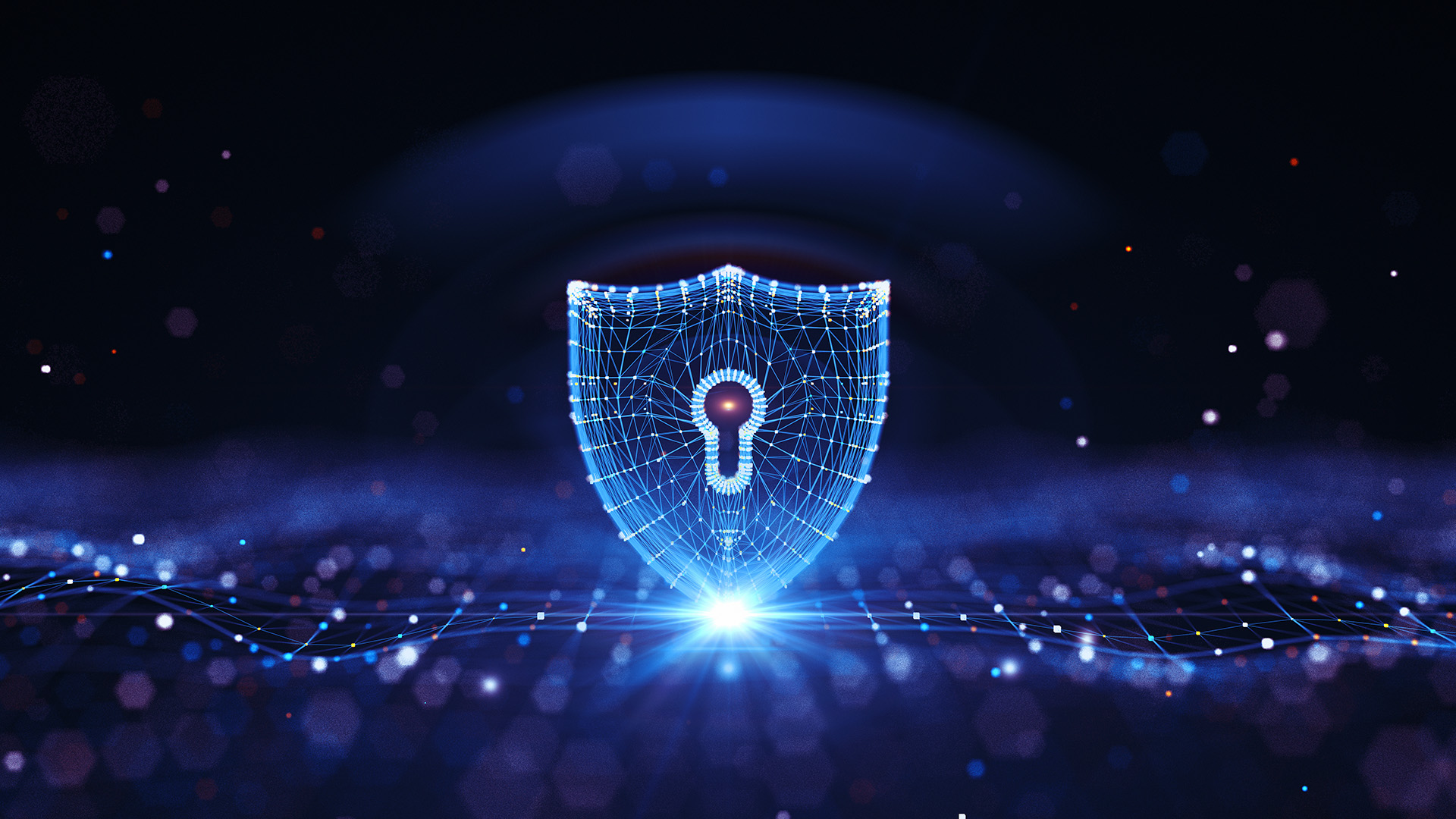The nature of cybercrime has changed. The biggest threat no longer comes from groups of undisciplined hackers, testing your defences just because they can, but from well-organised, highly-focused gangs looking to get in and steal your data, shut down systems or exploit a breach for their financial gain. Their methods are more sophisticated, combining vectors and creating scenarios to get inside your defences and do exactly what they want. What you see in this video might seem far-fetched hacking with the sheen of a Hollywood thriller but every move the Wolf makes is inspired by real-world cyberattacks. And while they're hitting the biggest, richest corporations, they're not leaving smaller businesses unscathed. A 2017 report by the British Chambers of Commerce found that while 42% of big businesses has experienced cybercrime, nearly one-in-five small companies had also fallen prey to an attack.
These attacks are carefully targeted, with email and spear-phishing attacks the weapons of choice. A 2016 report by RSA FraudAction claimed that there had been more than one million unique phishing attacks in the last twelve months, or a new phishing attack every 30 seconds; a 308% increase over the same period in 2015. Symantec's 2017 Internet Security Threat Report found that one in 131 emails now contained malware, and that email scams relying on spear-phishing, were targeting over 400 businesses around the globe every day. Advanced Persistent Threat attacks, where a hacker gains access to the target network but remains undetected for long periods of time, are on the rise, as are ransomware attacks, Wiper malware attacks (where the malware destroys business data) and encryption attacks (where the malware encrypts business data). The hackers behind ransomware and encryption attacks are now charging up to half a million dollars to decrypt and release corporate data.
Preying on the weak
What's more, it's not just your network that you have to worry about. One of the trends picked out by the SANS Institute report, Cyber Security Trends: Aiming Ahead of the Target, is fourth-party attacks, where hackers compromise an outsourced IT provider to gain access to the systems of their clients. Organised gangs, like the China-based APT10 group, are using custom malware to hit exactly these providers as a stepping stone into attacks on other businesses, with widespread operations against companies in at least 15 countries, including the UK, the US, France and Japan.
Businesses need to take these threats seriously; obscurity is no longer adequate protection when the stakes so high. On the one hand, a breach means loss of business, downtime and damage to the company's reputation; the Ponemon institute's 2016 Data Breach study put the average cost at $221 per compromised record, with $76 covering direct costs and $145 reflecting indirect costs, such as the impact on the brand and higher customer churn rates. On the other hand, new regulations, like the EU's GDPR, are increasing the penalties for a breach to up to 4million or 4% of annual global turnover whichever is higher.
Protection it's time to change approach
What can businesses do in the face of such concerted attacks? Perhaps it's time to adjust their security approach. The old mainstays of network-level security protecting the perimeter, fortifying the edge no longer work. They run counter to the IT needs of modern enterprises and, if someone wants in hard enough, it's hard to keep them out. One PC neglected for a few minutes with an open USB port, one email clicked on in a rash moment, one printer left unsecured, and the hackers are already inside. Once there, they might lie low and wait for their moment or simply run amok. Either way, you won't know until it's already too late.
Sign up today and you will receive a free copy of our Future Focus 2025 report - the leading guidance on AI, cybersecurity and other IT challenges as per 700+ senior executives
Network analytics is a smarter route forwards, while changes to process and staff habits can help stave off attack, but real security means going deeper. Companies need to bring security right down to device level and not just for PCs, but printers and MFPs as well. These are now effectively sophisticated computers, with local processing power, memory, storage, connectivity and a screen. Companies that run them without appropriate security are creating a wide, open hole in their defences that a predator like The Wolf will greedily exploit.
All of the attacks you've seen could have been stopped had the PCs and printers involved been protected at the hardware level with the kind of baked-in security technologies you'll find on business devices from HP, technologies including:
- HP SureStart monitors the PC or printer's BIOS for signs of tampering, protecting the data that controls device configuration and security. If it detects signs of attack, it can restore the BIOS to a last known good version, along with any settings and policies configured. With SureStart, printers and PCs quickly recover from attacks.
- Run-time Intrusion detection works in the background, checking the device's memory for potential intrusions and rebooting automatically if one is discovered. If auto-recovery is disabled or the intrusion is repeated, the device can reboot and hold at a pre-boot state to stop malware executing.
- BIOS whitelisting technology ensures that only known, good firmware can be installed and executed, preventing hacked firmware from giving predators an easy way into your network. If the firmware can't be validated, the device reboots to prevent malware loading.
- HP WorkWise combines a PC dashboard with a smartphone app, protecting your PC when you're away. You can automatically lock your PC screen when away from your desk, and it unlocks automatically on your return. WorkWise also provides you with real-time alerts on sign-in attempts, the connection or disconnection of cables and USB keys, not to mention any efforts made to move or close your laptop.
Backed up by comprehensive management tools that ensure robust, consistent policies across devices, these technologies provide the security needed to keep the wolves of this world at bay. The predators might be getting smarter, but you don't have to leave yourself such easy prey.
ITPro is a global business technology website providing the latest news, analysis, and business insight for IT decision-makers. Whether it's cyber security, cloud computing, IT infrastructure, or business strategy, we aim to equip leaders with the data they need to make informed IT investments.
For regular updates delivered to your inbox and social feeds, be sure to sign up to our daily newsletter and follow on us LinkedIn and Twitter.
-
 Can enterprises transform through startup theory?
Can enterprises transform through startup theory?In-depth For big corporations, the flexibility, adaptability, and speed of a startup or scale-up is often the total opposite of what’s possible within their own operations
-
 AI is creating more software flaws – and they're getting worse
AI is creating more software flaws – and they're getting worseNews A CodeRabbit study compared pull requests with AI and without, finding AI is fast but highly error prone
-
 Blackpoint Cyber and NinjaOne partner to bolster MSP cybersecurity
Blackpoint Cyber and NinjaOne partner to bolster MSP cybersecurityNews The collaboration combines Blackpoint Cyber’s MDR expertise with NinjaOne’s automated endpoint management platform
-
 Forget MFA fatigue, attackers are exploiting ‘click tolerance’ to trick users into infecting themselves with malware
Forget MFA fatigue, attackers are exploiting ‘click tolerance’ to trick users into infecting themselves with malwareNews Threat actors are exploiting users’ familiarity with verification tests to trick them into loading malware onto their systems, new research has warned.
-
 Amazon confirms employee data compromised amid 2023 MOVEit breach claims – but the hacker behind the leak says a host of other big tech names are also implicated
Amazon confirms employee data compromised amid 2023 MOVEit breach claims – but the hacker behind the leak says a host of other big tech names are also implicatedNews Millions of records stolen during the 2023 MOVEit data breach have been leaked
-
 Nearly 70 software vendors sign up to CISA’s cyber resilience program
Nearly 70 software vendors sign up to CISA’s cyber resilience programNews Major software manufacturers pledge to a voluntary framework aimed at boosting cyber resilience of customers across the US
-
 Busting nine myths about file-based threats
Busting nine myths about file-based threatsWhitepaper Distinguish the difference between fact and fiction when it comes to preventing file-based threats
-
 The Total Economic Impact™ of the Intel vPro® Platform as an endpoint standard
The Total Economic Impact™ of the Intel vPro® Platform as an endpoint standardWhitepaper Cost savings and business benefits enabled by the Intel vPro® Platform as an endpotnt standard
-
 The Total Economic Impact™ of IBM Security MaaS360 with Watson
The Total Economic Impact™ of IBM Security MaaS360 with WatsonWhitepaper Cost savings and business benefits enabled by MaaS360
-
 WithSecure Elements EPP and EDR review: Endpoint protection on a plate
WithSecure Elements EPP and EDR review: Endpoint protection on a plateReviews An affordable cloud-managed solution with smart automated remediation services

